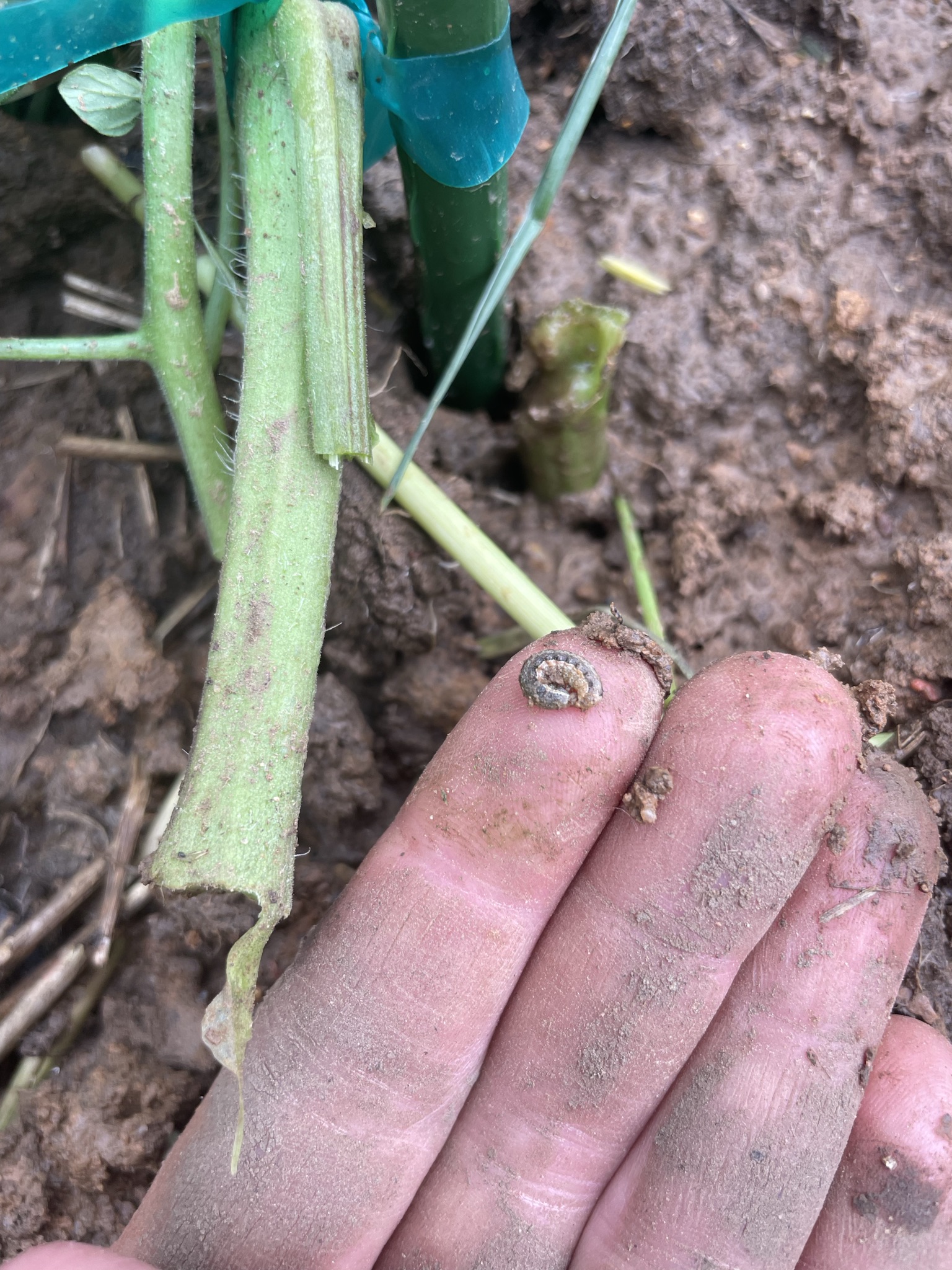AGRONOMICSUPPORT
YOU CAN TAKETO THE FIELD
Farmers on High Alert for Insects on Crops After Mild Winter
“With weather patterns we’ve never seen before, it’s hard to predict what insect pressures we’ll face,” says LG Seeds Agronomist Alex Cox. The elements are certainly there for a challenging year for crops.
Like much of the Corn Belt, Cox’s territory — eastern Kansas and western Missouri — experienced a relatively mild winter, with unusually warm, 80 F temperatures in February. “That gave insects a head start,” he says. “Plus,
it allowed higher survival rates.”
Therefore, Cox is urging farmers to be on alert. “Insects can come in, feed and move on, causing significant economic damage before you realize you have a problem,” he says. “That’s why I’m urging farmers to scout early and
consistently.”
Key points
- Insect pressure could be more intense after a mild winter.
- Farmers should scout early and regularly.
- Seed treatments and traits can protect crops against pest threats.
Know your at-risk fields
“A good starting place is knowing your problem fields and their history,” Cox says. But with these unprecedented weather patterns, he says it’s difficult to predict what farmers will run into. Case in point: His counterpart in Texas
is dealing with corn leaf aphids, a rarity for the area.
Fields with residue are also more vulnerable because the residue gives insects a place to overwinter. “Planting row crops into cover crops has become increasingly popular here because of the erosion control and moisture retention they offer during our hot summers,” Cox says. “Those farmers need to scout more often to make sure they don’t have problem insect pests warranting a rescue treatment.”
Early planted crops can also be more prone to insect pressure because insects have fewer alternative environments to feed upon.
Protect crops with seed treatments and traits
A seed treatment is a must when a farmer plants into cover crops or plants early, according to Cox. “LG Seeds offers a premium mix of the industry’s latest and most effective
seed treatments to control early season insects like cutworms and wireworms,” he says. “You’ll
be able to plant with confidence and sleep at night, knowing you have a layer of control in place to protect your seedlings.”
Traits are another line of defense against insect pressure. “Our trait packages offer multiple modes of action against insect pressures extending beyond the seedling stage,” Cox says. “Our lineup includes access to every major trait platform on the market, giving farmers
choices for meeting the unique needs of their farm and enhancing their ability to incorporate diversity.”
Keep an eye on fields and consider a chemical treatment, if necessary
Cox says he’s on-watch for the following three pests in particular:
He recently encountered high levels of black cutworms in a field planted to a rye cover crop. Once the cover crop is terminated and a row crop planted, he fears “Cutworms will have fresh, green vegetation to feed on.”

Cox encourages farmers to scout for these bugs from
emergence until about V10. Because true armyworms feed at night, he recommends scouting early in the morning or late in the afternoon.
With black cutworms, rescue treatment is warranted if 6% to 8% of the plants are cut above ground or fed upon. For the true armyworm, treatment is recommended when 25% or more of the seedling corn plants are damaged and larvae are still present.
For brown stink bugs, Cox refers to the University of Missouri’s economic threshold: If you find 3.5 stink bugs in 15 sweeps with a sweep net in 30-inch rows, you may need to pursue a chemical treatment.
Cox encourages farmers to reach out to their local LG Seeds agronomist for support dealing with pest pressure.





